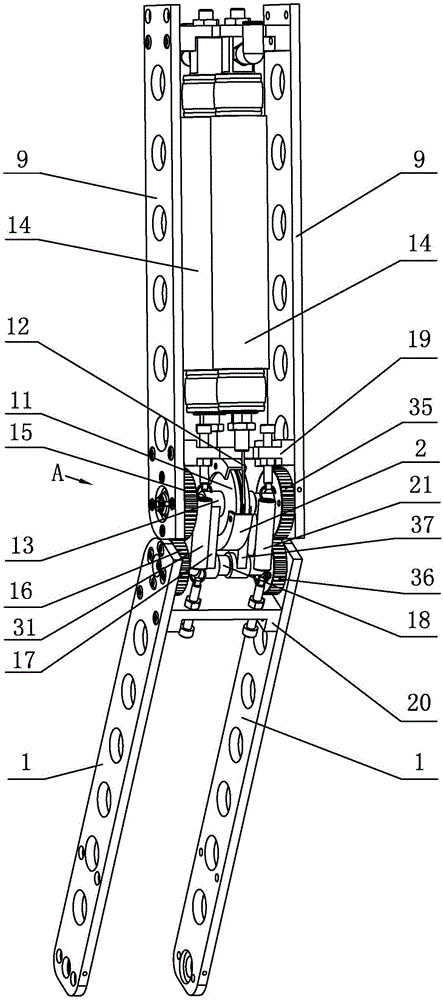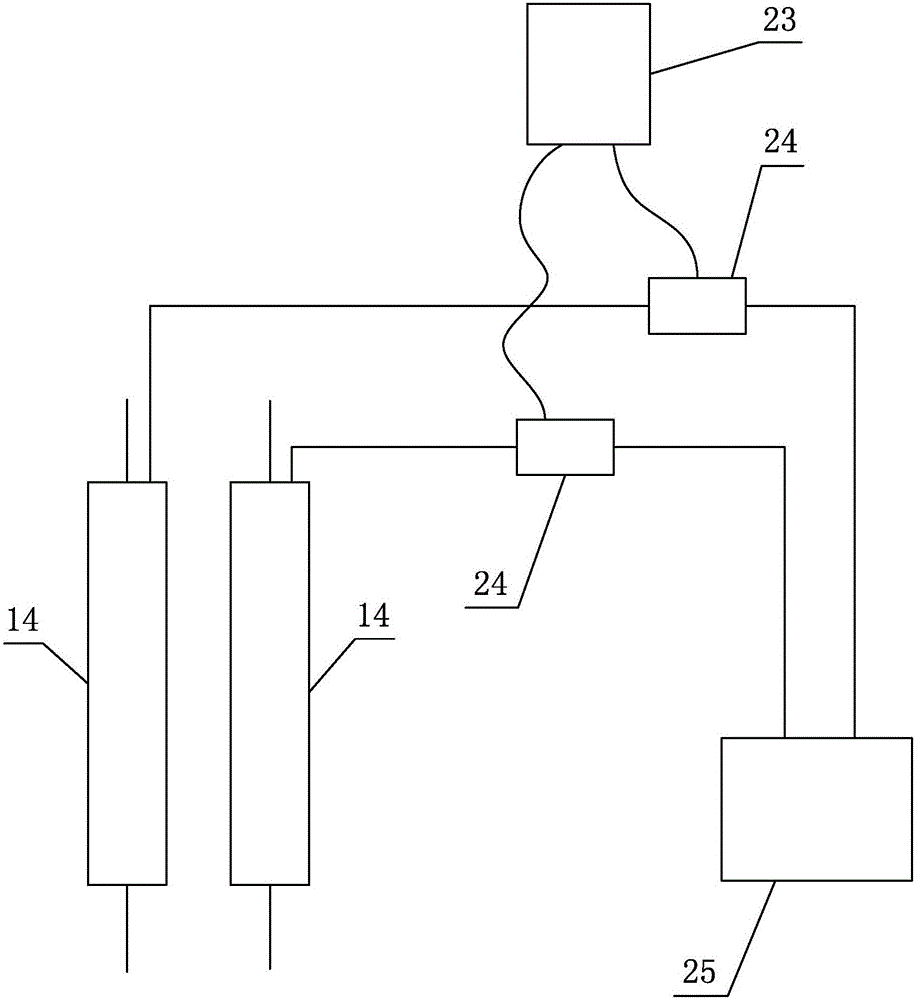A humanoid robot knee joint capable of active and semi-passive actuation
A humanoid robot and semi-passive technology, applied in the field of humanoid robots, can solve the problems of uncontrollable motion, low energy efficiency, and the inability of active and passive knee joints to achieve dynamic and efficient motion.
- Summary
- Abstract
- Description
- Claims
- Application Information
AI Technical Summary
Problems solved by technology
Method used
Image
Examples
specific Embodiment approach 1
[0013] Specific implementation mode one: combine figure 1 Explain that a humanoid robot knee joint capable of active and semi-passive driving in this embodiment includes a driving mechanism and a transmission mechanism; the driving mechanism includes a transmission wheel 11, a steel wire rope 12, a first rotating shaft 13, and a first spring support 19. A second spring support 20, a tension spring 21 and two pneumatic artificial muscles 14;
[0014] The transmission mechanism includes a central gear 15, a planetary gear 16, a tie rod 17 and a second rotating shaft 18;
[0015] The two pneumatic artificial muscles 14 are arranged in an antagonistic manner, and the upper ends of the two pneumatic artificial muscles 14 are connected to the thigh 9; a central gear 15 is fixed on the thigh 9, and the first rotating shaft 13 is mounted on a central gear 15 through bearing rotation superior;
[0016] A planetary gear 16 is fixed on the calf 1, the second shaft 18 is rotatably mount...
specific Embodiment approach 2
[0019] Specific implementation mode two: combination figure 1 and figure 2 Explain that a kind of humanoid robot knee joint that can realize active and semi-passive driving described in this embodiment also includes another sun gear 35 and another planetary gear 36; a sun gear 15 and another sun gear 35 are arranged on the transmission On both sides of the wheel 11, another central gear 35 is fixed on the thigh 9, a planetary gear 16 and another planetary gear 36 are arranged on both sides of the transmission wheel 11, and another planetary gear 36 is fixed on the shank 1. A rotating shaft 13 is rotatably mounted on another sun gear 35 through a bearing, the second rotating shaft 18 is rotatably mounted on another planetary gear 36 through a bearing, and the other sun gear 35 meshes with another planetary gear 36 . Such setting can reduce the clearance fit between the sun gear and the planetary gear, maintain balance, and ensure the stable and reliable operation of the knee ...
specific Embodiment approach 3
[0020] Specific implementation mode three: combination figure 1 Explain that a humanoid robot knee joint that can realize active and semi-passive driving described in this embodiment also includes another tension spring 31; another tension spring 31 is arranged on the other side of the transmission wheel 11, and the other The upper end of the tension spring 31 is connected with the first spring bracket 19 , and the lower end of the other tension spring 31 is connected with the second spring bracket 20 . Such a setting is conducive to providing sufficient driving force in the semi-passive sports mode. Others are the same as in the second embodiment.
PUM
 Login to View More
Login to View More Abstract
Description
Claims
Application Information
 Login to View More
Login to View More - R&D
- Intellectual Property
- Life Sciences
- Materials
- Tech Scout
- Unparalleled Data Quality
- Higher Quality Content
- 60% Fewer Hallucinations
Browse by: Latest US Patents, China's latest patents, Technical Efficacy Thesaurus, Application Domain, Technology Topic, Popular Technical Reports.
© 2025 PatSnap. All rights reserved.Legal|Privacy policy|Modern Slavery Act Transparency Statement|Sitemap|About US| Contact US: help@patsnap.com



